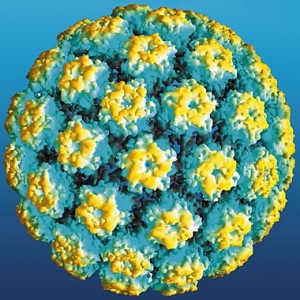Source: communities.washingtontimes.com
Author: Dr. Ali by Ali Forghani
The human papilloma virus (HPV) is the second leading cause of oral cancer. HPV is certainly not a newcomer to the disease world. It is one of the most common sexually transmitted disease on the planet. As of this writing, over 120 variations of the virus have been discovered, with different strands of HPV affecting different areas of the body. Many people contract HPV daily without realizing they have a virus, as it is very possible to carry a strand while displaying no noticeable symptoms.
HPV is a virus that is mainly focused on the outer surface of the body, the skin, as well as the mucus secreting areas. The most noticeable effect from certain strands of the virus is the appearance of warts on the skin, mainly concentrated on the arms, legs and hands.
Condylomata acuminatum, also called genital warts, are the strands of this virus found most commonly on individuals and are generally believed to be caused by the HPV strands 6 and 11. These particular strands of HPV are very common and easily treatable.
One of the prime reasons HPV is found so commonly in the world is the ease of transmission of the virus. HPV can be spread simply by contact of the skin, with certain strands branching out to be sexually transmitted.
These particular strands are the strands that should be of the most concern today due to the discoveries being made about the HPV STD strands. HPV 16, 18, 31, and 45 are the current strands associated with cancer and can be identified by the difference in physical markers they cause. These particular strands have growths that are flat and nearly invisible to the eye as opposed to the more conventional warts people are accustomed to recognizing.
The two strands of importance here are HPV 16 and 18, as these two have been determined to be strong causes of many of the cervical cancers of the world. Recent studies have linked HPV 16 to causing oral cancer in ever rising numbers. The oral cancers linked to HPV16 develop tumors in a different set of locations than non-HPV cancers, providing an easy method of identification.
HPV16 is often seen to manifest in the back of the throat, inside the mouth, the tonsillar pillars, and the tonsils themselves. Non-HPV tumors tend to be on the anterior tongue, the floor of the mouth and the mucosa of the cheeks. HPV16 is currently being spoken of as the second primary cause of oral cancer, and likely, will soon overpass alcohol and tobacco as being the primary cause.
There are two alarming concerns with HPV 16: The age of the victims that contract the virus and the method in which it is often transmitted. Oral cancer contracted via the ingestion of alcohol and tobacco is most often associated with individuals who are well into life, often over the age of forty. These people have often been smoking or drinking for the better part of their adult lives, and the cancer has built up over many years.
HPV 16 varies from this immensely as it most often found in people in their 20s with no traces of alcohol or tobacco consumption, although there is an additive link between consumption of these and HPV 16. The ease of which HPV 16 is unknowingly transmitted lies in the fact that it is mainly transmitted by sexual contact. Remember that the virus resides on the skin, and this includes the skin of the anus, vagina and penis.
Often oral contact of these areas allows the HPV to transfer directly to the oral cavity. It is usually the case that the carrier of HPV 16 is not even aware and spreads the virus unknowingly to their partner.


Leave A Comment
You must be logged in to post a comment.